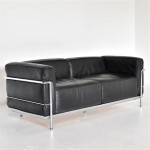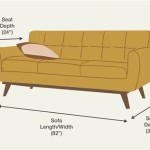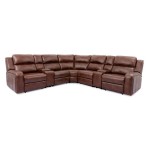Should I Let My Dog Sleep On The Sofa?
The question of whether or not to allow a dog on the sofa is a common dilemma for dog owners. It involves considerations of hygiene, behavior, training, and the overall dynamic within the household. There is no universally correct answer; the best approach depends on individual circumstances and priorities.
Arguments for Allowing Dogs on the Sofa
Several factors might lead owners to permit their dogs sofa privileges. These include fostering a sense of closeness and companionship, providing comfort for anxious or older dogs, and simply acknowledging a dog's natural desire to be near its family. Some owners view furniture sharing as a harmless indulgence that strengthens the human-animal bond.
Potential Drawbacks of Sofa Sharing
Conversely, there are several potential downsides to consider. Dogs can shed hair and dander on furniture, potentially exacerbating allergies. They might also track in dirt and mud, requiring more frequent cleaning. Behavioral issues like resource guarding of the sofa can arise, creating tension within the household. Finally, some owners simply prefer to maintain a clear separation between human and animal spaces.
Hygiene Considerations
Maintaining hygiene is a key concern for many owners. Regular brushing can minimize shedding, but it won't eliminate it entirely. Protective covers can help protect furniture from dirt and pet hair, but they require frequent washing. Regularly cleaning the sofa, including vacuuming and spot cleaning, is essential regardless of whether a dog is allowed on it, but the frequency will likely increase with a canine companion sharing the space.
Training and Behavioral Implications
Allowing a dog on the sofa can have implications for training and behavior. It can potentially blur the lines of dominance and submission within the household, especially if not managed properly. Clear rules and consistent enforcement are crucial. If a dog is allowed on the sofa, it should be under specific conditions, such as only when invited. Teaching commands like "on" and "off" can help maintain control and prevent the dog from claiming the sofa as its own territory.
Considering Your Dog's Temperament and Health
A dog's temperament and health should also influence the decision. Anxious or senior dogs might find comfort and security in sharing the sofa. However, dogs prone to territorial behavior might interpret sofa access as a sign of dominance, potentially leading to problems. For dogs with mobility issues, getting on and off the sofa might be difficult or painful, necessitating ramps or other aids. Owners should carefully consider their dog's individual needs and tendencies.
Alternatives to Sofa Sharing
If sofa sharing isn't desirable, providing alternative comfortable spaces for the dog is essential. A high-quality dog bed, placed in a central location near the family, can offer a sense of belonging and security. Other options include blankets, cushions, or even a designated dog-friendly chair. The goal is to create a comfortable and inviting space for the dog that doesn't involve the sofa.
Establishing Clear Rules and Boundaries
Whether or not a dog is allowed on the sofa, establishing clear rules and boundaries is paramount. Consistency is key. If the dog is allowed on the sofa, the terms of access should be clear and consistently enforced. If the sofa is off-limits, this boundary should be maintained without exception. Clear communication and consistent enforcement will help the dog understand the household rules and prevent confusion or behavioral issues.
Maintaining a Clean and Comfortable Environment for Everyone
Ultimately, the decision of whether to allow a dog on the sofa depends on creating a comfortable and harmonious environment for both the dog and the human members of the household. Factors such as hygiene preferences, the dog's temperament, and the overall household dynamic should all be weighed carefully. Regular cleaning and grooming are essential regardless of the decision, and providing the dog with a comfortable alternative resting space is always a good idea. The goal is to find a balance that works for everyone involved.
Long-Term Considerations
It's also important to consider the long-term implications of the decision. Allowing a dog on the furniture can become a habit that's difficult to break later. If there's a possibility of future lifestyle changes, such as moving to a smaller home or having children, it's wise to consider how sofa-sharing might fit into those scenarios. Thinking ahead can help prevent potential challenges down the line.

Should I Let My Dog Sleep On Bed Or Couch Los Angeles Training

Dear Trainer How Do I Keep My Dog Off The Couch People By Rover Com

The Effects Of Your Dog Sleeping In Bed Pros And Cons Wildest

Dear Trainer How Do I Keep My Dog Off The Couch People By Rover Com
Why Do Dogs Hang Their Head Of The Couch Or Bed When Sleeping Quora

My Dog Won T Settle Teaching Your To Be Calm And Relaxed Battersea Dogs Cats Home

Where Should Your Dog Sleep Orvis News

Tips For Keeping Your Dog Off The Furniture Petmd

What Your Dog S Sleeping Position Will Tell You Reader Digest

Why Does My Dog Sleep So Close To Me 4 Reasons Vet Approved Tips Hepper








